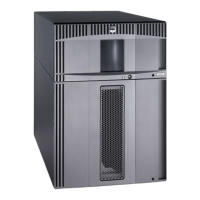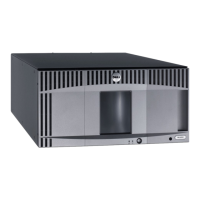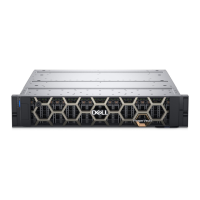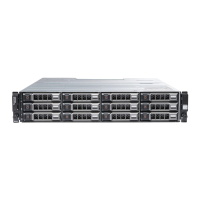RAID Level Usage
To ensure best performance, you must select an optimal RAID level when you create a system physical disk. The optimal
RAID level for your disk array depends on:
• Number of physical disks in the disk array
• Capacity of the physical disks in the disk array
• Need for redundant access to the data (fault tolerance)
• Disk performance requirements
RAID 0
CAUTION: Do not attempt to create virtual disk groups exceeding 120 physical disks in a RAID 0 configuration even
if premium feature is activated on your storage array. Exceeding the 120-physical disk limit may cause your storage
array to be unstable.
RAID 0 uses disk striping to provide high data throughput, especially for large files in an environment that requires no
data redundancy. RAID 0 breaks the data down into segments and writes each segment to a separate physical disk. I/O
performance is greatly improved by spreading the I/O load across many physical disks. Although it offers the best
performance of any RAID level, RAID 0 lacks data redundancy. Choose this option only for non-critical data, because
failure of one physical disk results in the loss of all data. Examples of RAID 0 applications include video editing, image
editing, prepress applications, or any application that requires high bandwidth.
RAID 1
RAID 1 uses disk mirroring so that data written to one physical disk is simultaneously written to another physical disk.
RAID 1 offers fast performance and the best data availability, but also the highest disk overhead. RAID 1 is
recommended for small databases or other applications that do not require large capacity. For example, accounting,
payroll, or financial applications. RAID 1 provides full data redundancy.
RAID 5
RAID 5 uses parity and striping data across all physical disks (distributed parity) to provide high data throughput and
data redundancy, especially for small random access. RAID 5 is a versatile RAID level and is suited for multi-user
environments where typical I/O size is small and there is a high proportion of read activity such as file, application,
database, web, e-mail, news, and intranet servers.
RAID 6
RAID 6 is similar to RAID 5 but provides an additional parity disk for better redundancy. RAID 6 is the most versatile RAID
level and is suited for multi-user environments where typical I/O size is small and there is a high proportion of read
activity. RAID 6 is recommended when large size physical disks are used or large number of physical disks are used in a
disk group.
22
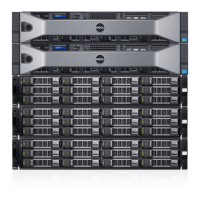
